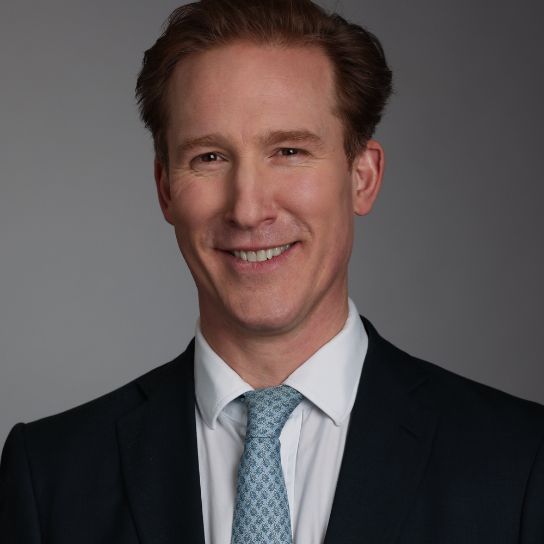On 5-7 March, the Banking and Business Forum Iran-Europe was held in Tehran. Six Herbert Smith Freehills partners (contact details on right) spoke at the conference on a range of topics, from the regulatory requirements of banks in Europe (and how such requirements present challenges to doing business with Iran at the moment) to the opportunities for project finance and sector-specific challenges in mining and renewable power.
Iranian speakers at the conference were very senior, including the Governor of the Central Bank, the Head of the Office of the President and no fewer than eight Ministers and Deputy Ministers, including from the Ministries of Petroleum, Road and Urban Planning and Industry, Mines and Commerce. What was most notable about the speeches made by the Iranians, and comments in subsequent discussions, was how keen Iran is to re-engage with the outside world and to encourage investment into Iran. With a range of sanctions having been lifted on 16 January this year (“Implementation Day”, as it is termed), many Iranians are unclear as to why European banks are not yet prepared to lend to, or open correspondent banking relationships with, Iran.
What is clear, though, is the scale of the opportunity that the re-opening of Iran offers to investors – by way of illustration, annual GDP growth was forecast to be 5% even before the removal of sanctions. Set out below are our key findings from the conference, together with details of the very real challenges that remain.
Opportunities
Power
At the moment, 50% of Iran’s electricity is generated by the private sector and Iran’s privatisation process continues. For foreign investors looking to enter the market, conventional power projects will be structured on a BOO basis with a guaranteed supply of fuel, and a five-year ECA. However, conventional production is currently very inefficient and the Deputy Minister of Energy emphasised its focus on increasing efficiency from around 37% currently to approximately 44% in the near future. In addition, Iran is keen to export power, particularly to the key markets of Iraq, Turkey, Pakistan and Afghanistan.
There is also huge renewable potential, in both the solar (photovoltaic) and wind sectors and an increased focus on reducing greenhouse emissions and low carbon development as well as a target to increase water production, predominantly in the south of Iran.
Infrastructure and transport
Iran’s geographically central position in the region means that it is well-positioned to become a transport hub, according to the Deputy Minister of Urban Planning and Roads, with cargo transit from China to the European Union through Iran taking only 18 days. There is substantial scope for heavy rail, with one key project mentioned by the Deputy Minister being a railway for the transportation of 500 million tonnes of iron ore to port. In the aviation sector, there was talk of further development in Tehran of a passenger terminal, a cargo terminal, parking and, notably, the CIP (“commercially important person”) terminal. Tehran is also planning a car expressway. Sea projects include a container port, a bulk liquids terminal and a solid bulk terminal. All of these projects would likely be carried out by way of a BOT structure backed by government guarantees. One key point noted was that the equity of any SPV should be at least 30% of total investment estimates.
Other notable projects mentioned related to the remainder of the rail sector, such as railway development, electrifications, suburban railways and double tracking – all of which were earmarked to be carried out on a build, lease, transfer basis. The Deputy Minister also talked of the need for investment in housing and urban development.
Mining
Iran has huge metals and mining potential, with approximately 7% of the world’s proven reserves of minerals. Of potential interest to investors is the fact that Iran has already conducted data research to reduce exploration risk. A mining data bank exists of approximately 600,000 km2 and Iran is planning to conduct data research of about 500,000 km2/ year for the next decade. In addition to the raw data that is being compiled, a mining cadastre has been implemented and should, according to the Deputy Minister of Mines, be up to date.
In terms of concrete opportunities, the Ministry of Mines has identified 100 “major areas” for specific mining projects, which, according to the Deputy Minister of Mines, have well-developed infrastructure. Notwithstanding that, US$29 billion of investment is required. Iran is already self-sufficient in metals production and is planning to increase its production capacity from 24 million tonnes a year of steel to 55 million. Iran also wants to develop its iron ore concentrate production from 35 million tonnes per year to 70 million, as well as aluminium, copper and zinc projects. The Deputy Minister noted that although joint ventures are highly recommended, it is possible to conduct mining activities without an Iranian partner.
Oil and gas
One of the greatest opportunities in Iran remains the hydrocarbons sector. The Deputy Minister of Energy noted that the country is planning on investing in the next five years, US$80 billion in the upstream sector, US$10 billion on refining and related distribution, over US$80 billion on petrochemicals and over US$70 billion in the downstream sector. Priorities for the country were stated as being upstream projects with neighbouring countries and brownfield IOR/EOR, as well as petrochemical and refinery products. Over 52 hydrocarbon fields will be offered for tender (29 oil fields and 23 gas fields), with the first fields anticipated to include Changouleh, Arvand and Sohrab, according to one source.
Export credit agency finance
UKEF (the United Kingdom’s export credit agency) confirmed that it is open for business and on cover. Euler Hermes (the German ECA) intends to follow soon. Although not at the conference, CESCE, the Spanish ECA, is also active. For those looking to export goods and services to Iran, seeking ECA direct lending and/or cover is a logical step, although the current unwillingness of banks to deal with Iran continues to present a challenge.
Challenges
Sanctions
US primary sanctions remain in place, notwithstanding the lifting of US secondary sanctions and EU primary sanctions. What was clear from the conference was the frustration of Iranians and foreign investors alike at not being able to carry out the transactions that they would like; and lack of clarity on the Iranian side as to why non-US companies and banks were not investing in Iran following the easing of sanctions. Snapback risk is also at the forefront of investor concerns.
The financial system
There is an increasing sense of frustration in Iran at the limited progress being made in reconnecting the country to the global banking payments (and wider financial) system. To a degree, the government (understandably) was over-optimistic in terms of how quickly the lifting of sanctions would translate into tangible change. The focus of Iranian banks’ frustration is the conservatism of global banks, although on the Iranian side, there is perhaps a lack of appreciation of the regulatory and policy requirements to which international banks are subject. There is a clear need for dialogue and mutual education between Iranian and global banks; the difficulty remains that international banks are not yet prepared to engage at all with Iranian banks.
As a general matter, Iranian financial infrastructure does not currently meet global standards:
- Basel II has not been fully implemented, although local version is quite close. (Bank Melli noted that it meets Basel II capital standards) The Central Bank of Iran (the “CBI”) is considering how to approach Basel III. There is public recognition that local banks’ balance sheets have been adversely impacted by the relatively high level of non-performing loans and that this is a problem the CBI needs to tackle. Privately, a number of those at the conference recognised that local banks are, in Western terms, technically insolvent, though daily business flows smoothly.
- a law enhancing supervisory powers has not yet been passed. It was clear that there remains a lack of local recognition about the importance of this from a global standards perspective.
- that said, a CFT law was ratified by the Assembly of Islamic Council and approved by the Guardian Council on 3 March 2016. The implementation of enhanced AML and CFT rules is critical as Iran remains one of two FATF high-risk jurisdictions due to the inadequacy of its AML/CTF/STR regimes. Practically speaking, this means that due diligence standards for correspondent banking are set very high.
- the CBI has asked the IMF to review the Iranian AML/CTF framework against FATF standards, so that Iran can join the Eurasian working group. Without the law being passed and an effective STR regime, it is unlikely that the assessment will significantly alter the FATF rating.
On a more positive note, Iranian banks claim to be well-advanced with mobile payment systems and to be actively considering fintech solutions (particularly around payment platforms). The Central Bank announced that in the week leading up to 12 March some 244 correspondent relationships had been entered into with foreign banks and 744 letters of credit had been issued, and that these figures had increased to 264 relationships and 1202 letters of credit in the following week.
Audit standards are another concern: although public banks are audited by the public audit authority, with no reliable standards for the auditing of private banks, in neither case are global standards achieved. The CBI is planning to require local listed companies to produce next year’s accounts in near-IFRS format.
There remains only a basic framework around transparency of ownership, governance and risk management. Investors will need to do considerable work to understand the infrastructure around matters such as the companies registry and disclosure of interests. More widely, there is little sense of the documentation required to make a project bankable.
Despite the challenges above, the Iranian banking system remains rich with opportunity. International banks considering establishing a subsidiary in Iran will generally need to partner with a local entity unless they set up in a free zone. Reports suggest some Iranian banks may also be looking to acquire European operations. First movers take note – the CBI claimed that foreign banks have already been in talks about opening locally. A number of Iranian banks have reconnected to the SWIFT system and the level of engagement is moving up, albeit at a slower pace than Iran would like and from a very low starting point.
Conclusion
Challenges notwithstanding, Iran is clearly a country – and a market – of enormous potential. From geographical location to natural resources, via educated workforce and eagerness to engage with the world, there is an tremendous amount to recommend Iran as an investment destination. Although investors will need to tread carefully, with detailed due diligence required and more developed banking links essential, for those who are bold and are first into the market, the returns are likely to be as tremendous as the opportunities.
Should you have any questions relating to Iran or Herbert Smith Freehills’ Iran initiative, please contact Joanna Addison in the first instance.
Key contacts
Legal Notice
The contents of this publication are for reference purposes only and may not be current as at the date of accessing this publication. They do not constitute legal advice and should not be relied upon as such. Specific legal advice about your specific circumstances should always be sought separately before taking any action based on this publication.
© Herbert Smith Freehills 2024


